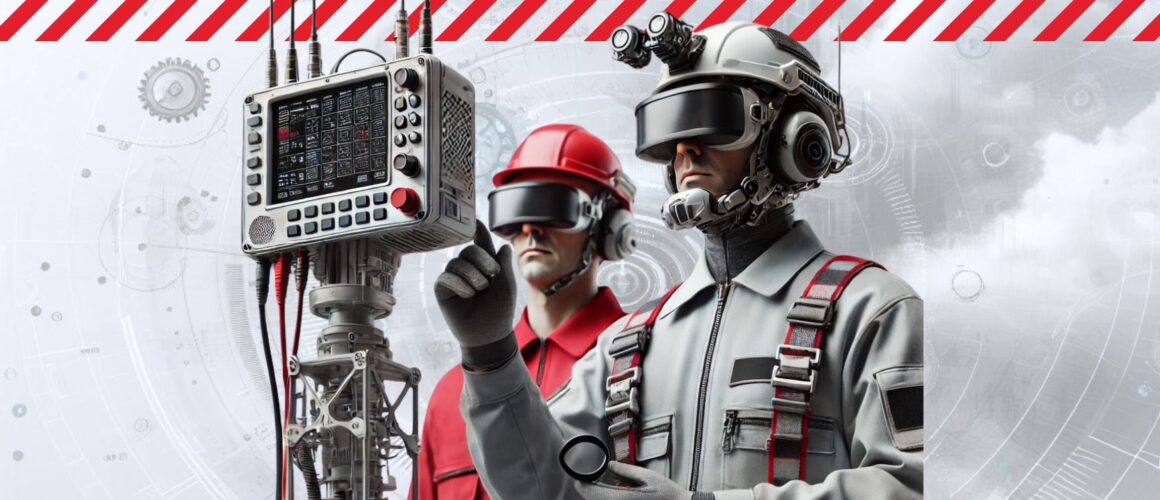IoT Technology
Utilizing IoT Technology for Advanced Equipment Maintenance
IoT technology refers to the network of interconnected devices that can collect and exchanging data through the internet. This technology has found widespread applications in diverse industries, ranging from healthcare and transportation to manufacturing and agriculture.
The Significance of Proactive Equipment Maintenance
One critical area where IoT technology has proven to be invaluable is advanced equipment maintenance. Traditionally, businesses have followed a reactive approach to equipment maintenance, waiting for breakdowns or malfunctions before taking necessary actions. However, this approach often leads to costly downtime, decreased productivity, and increased repair expenses.
Proactive equipment maintenance, on the other hand, seeks to prevent breakdowns by continuously monitoring and analyzing equipment performance. By utilizing IoT technology, businesses can collect real-time data on various parameters such as temperature, pressure, vibration, and usage patterns. This data can then be analyzed using advanced analytics tools to detect potential issues before they escalate into significant problems.
Revolutionizing Equipment Maintenance
Traditional approaches to maintenance have often been reactive, relying on manual inspections or routine check-ups. However, with the advent of IoT, a paradigm shift has occurred, enabling real-time monitoring and predictive analytics for proactive equipment maintenance.
The Role of IoT in Revolutionizing Maintenance Approaches
IoT technology has disrupted traditional maintenance approaches by providing unprecedented levels of connectivity and data collection. Using sensors, machines and equipment can now communicate their status, performance, and potential issues to a central system, allowing maintenance teams to monitor and diagnose problems remotely. This real-time monitoring capability drastically reduces downtime and enables more efficient maintenance practices.
Real-Time Monitoring for Proactive Maintenance
With sensors embedded in machines and equipment, data is continuously collected and transmitted to a centralized platform. This influx of real-time data allows maintenance teams to have a comprehensive understanding of each device’s condition, performance, and any anomalies that may arise.
By leveraging this real-time data, maintenance teams can detect potential issues even before they manifest as failures. For instance, abnormal temperature fluctuations or vibrations could indicate an impending breakdown. With IoT technology, such anomalies are detected immediately, triggering alerts that prompt proactive measures to rectify the problem. Ultimately, this proactive approach minimizes unplanned downtime and prevents catastrophic failures.
Predictive Analytics for Data-Driven Maintenance Strategies
IoT technology not only enables real-time monitoring but also facilitates predictive analytics. By analyzing the vast amounts of data collected from equipment sensors, sophisticated algorithms can identify patterns and trends. This data-driven approach allows maintenance teams to predict possible failure points and plan maintenance activities accordingly.
Through predictive analytics, maintenance schedules can be optimized, and resources can be allocated more efficiently. Instead of relying on fixed maintenance intervals, IoT technology enables a condition-based maintenance strategy. Equipment is maintained, when necessary, based on actual usage patterns and the existing condition of each device. As a result, unnecessary maintenance costs are minimized, and critical equipment failures can be avoided.
Implementing for Equipment Maintenance – IoT Technology
IoT-enabled Equipment Maintenance Solutions
Sensor Networks: One of the critical components of IoT-enabled equipment maintenance solutions is the use of sensor networks. These networks consist of various sensors strategically placed on the equipment to monitor its condition, collect data, and identify potential issues before they escalate into major problems. For example, in a manufacturing plant, sensors can be installed on machines to measure temperature, vibration, or pressure. This real-time data is then transmitted to a central system, where it is analyzed to detect anomalies or abnormalities. Through continuous monitoring, equipment failures can be predicted, and necessary maintenance actions can be taken proactively.
Predictive Maintenance Algorithms
IoT technology also enables the implementation of predictive maintenance algorithms, which leverage advanced analytics and machine learning techniques to forecast equipment failures accurately. By analyzing historical data and identifying patterns, these algorithms can anticipate when a specific component is likely to fail. This allows maintenance teams to schedule repairs or replacements in advance, minimizing the likelihood of unplanned downtime. For instance, in the aviation industry, predictive maintenance algorithms can analyze data from aircraft engines to predict impending failures and schedule maintenance accordingly.
Integration of IoT Devices with Existing Equipment and Software Systems
Integrating IoT devices with existing equipment and software systems is a critical aspect of successfully implementing IoT-enabled equipment maintenance solutions. The compatibility between IoT devices and existing infrastructure ensures seamless data flow and effective utilization of the collected information.
Hardware Integration
When integrating IoT devices with existing equipment, it is essential to ensure hardware compatibility. This involves configuring IoT sensors, gateways, or other devices to connect seamlessly with the existing machinery. For example, in a smart building, IoT sensors used for HVAC system monitoring should be compatible with the building’s existing control systems.
Software Integration
Besides hardware integration, software compatibility is equally important. IoT devices generate vast amounts of data that need to be processed and analyzed effectively. Integrating IoT technology with existing software systems, such as enterprise resource planning (ERP) or computerized maintenance management system (CMMS), allows for efficient data management and actionable insights. This integration enables maintenance teams to access real-time equipment data, track maintenance tasks, and make informed decisions.
Benefits of IoT-driven Equipment Maintenance
By leveraging IoT technology, businesses are able to monitor and maintain their equipment in a more efficient and proactive manner, leading to increased operational efficiency, reduced costs, and extended equipment lifespan.
Detecting potential failures before they occur.
Traditional maintenance approaches often involve reactive measures where equipment is serviced only after a breakdown or malfunction. This not only leads to considerable downtime but also adds to the costs associated with emergency repairs. With IoT-driven equipment maintenance, businesses can now monitor their equipment in real-time, collecting data on various parameters such as temperature, pressure, and usage patterns. By analyzing this data, potential failures can be identified and addressed proactively, preventing downtime and improving overall operational performance.
Reducing downtime
Equipment failures often result in disruptions to operations, causing delays and inconveniences for customers. With IoT technology, businesses can accurately predict when maintenance is required and schedule it during periods of low demand or when the equipment is not in use. This ensures that the equipment remains operational when it is needed the most, minimizing interruptions and optimizing customer service. As a result, businesses can enhance their reputation and build long-term customer loyalty.
Optimizing maintenance strategies
Traditional maintenance methods often involve scheduled inspections and routine replacements, which can be time-consuming and expensive. With IoT technology, businesses can monitor the actual condition of their equipment and perform maintenance activities only when necessary. By eliminating unnecessary maintenance tasks, businesses can save on labor costs, reduce inventory requirements, and extend the lifespan of their equipment. This not only results in significant cost savings but also ensures that maintenance efforts are focused on areas that require attention the most.
Overcoming Challenges – IoT Technology
Addressing Data Security Concerns
With the proliferation of IoT devices, the amount of data being generated and transmitted has increased exponentially. This poses a significant challenge in terms of data security. Any vulnerability in the system could result in unauthorized access to sensitive information or even sabotage of critical infrastructure.
To address these concerns, organizations must prioritize security measures throughout the entire IoT ecosystem. This includes implementing strong encryption protocols for data transmission, ensuring authentication and authorization mechanisms are in place, and regularly updating and patching IoT devices to protect against emerging threats.
Data privacy must also be a top priority when it comes to IoT technology. Organizations must establish clear guidelines on data collection, storage, and sharing, ensuring that they comply with relevant regulations and obtain explicit consent from users. Anonymization techniques can also be employed to protect the privacy of individuals while still allowing for meaningful analysis of data.
Ensuring Network Reliability
IoT devices rely heavily on connectivity to transmit data and receive instructions. Network reliability is crucial to guarantee seamless operation and prevent disruptions that could have serious consequences. However, IoT networks are vulnerable to issues such as signal interference, bandwidth limitations, and network congestion.
To mitigate these risks, organizations should adopt redundancy strategies by implementing multiple connections and utilizing diverse network providers. This would ensure that if one network fails, the devices can quickly and seamlessly switch to an alternative connection, maintaining uninterrupted service.
Organizations should invest in scalable network infrastructures that can handle increasing traffic as the number of IoT devices continues to grow. Regular monitoring and maintenance of network infrastructure is also important to identify and address any issues before they impact the reliability of the entire IoT system.
Discover the Benefits of CMMS from Signalo
One oftechnological advancement that has revolutionized the maintenance landscape is the integration of Computerized Maintenance Management System (CMMS) with Internet of Things (IoT) technology. Signalo, a leading provider of CMMS solutions, offers an extensive range of features that are seamlessly integrated with IoT capabilities to optimize maintenance operations like never before.
Why Choose Signalo’s CMMS?
If you’re looking for a comprehensive CMMS solution that combines the power of IoT technology, Signalo should be at the top of your list. The cutting-edge system not only simplifies and automates maintenance management but also provides real-time insights into equipment health, thus helping businesses make data-driven decisions. By incorporating IoT technology, Signalo’s CMMS offers numerous benefits that can significantly improve maintenance efficiency and reduce downtime.
Predictive Maintenance
One of the key advantages of Signalo’s CMMS integrated with IoT technology is the ability to monitor equipment health and performance. Through sensors installed on critical assets, vital data such as temperature, pressure, vibration, and energy consumption is continuously collected and transmitted to the CMMS. This data enables maintenance teams to identify potential issues before they escalate, allowing for timely preventive measures to be taken. Consequently, businesses can proactively address maintenance concerns, eliminate unexpected breakdowns, and minimize costly downtime.
Optimized Asset Utilization
Signalo’s CMMS with IoT technology empowers organizations to maximize asset utilization and enhance operational efficiency. By leveraging IoT-enabled devices, businesses can closely monitor asset performance and analyze usage patterns. This information helps in identifying underutilized assets, optimizing maintenance schedules, and predicting when an asset may require servicing or replacement.
Invitation to a free consultation
We invite you to take advantage of a free consultation. During the meeting, our experts will show and discuss the operation of the system and propose a dedicated solution.
Values
Discover the benefits of collaboration
We offer a free consultation as the first step of collaboration, allowing you to familiarize yourself with our approach and verify our advisory competencies. This way, even before making a decision, you’ll feel that your situation and problem have been well understood, and the proposed solution will be optimally tailored to your company’s situation.
Our services (support) are included in a subscription, which does not generate hidden costs. The subscription-based billing allows for a significant reduction in the entry threshold into the system and enables immediate testing.
We are communicationally independent – we can develop our system without depending on the client’s IT department. We do not generate additional work for the client’s IT department. This way, we lower the implementation risk and associated costs. The possibility of quicker implementation of the solution results in faster return on investment.
Login to our applications is secured at a high level, characteristic of banking solutions. At the same time, the login process is intuitive. Your data is as secure as in a bank thanks to our system.
We offer multilingualism in our solutions through real-time translation—each employee operates applications in their native language. This enhances efficiency and reduces costs by expanding the potential labor market and eliminating the need to hire translators.
Our software features an interface optimized for quick, easy, and intuitive use, even by digitally excluded or poorly skilled employees. This means real-time savings in both time and training costs for your workforce in using the new software. The ability for rapid deployment of software for use results in a shorter transition/implementation period.















